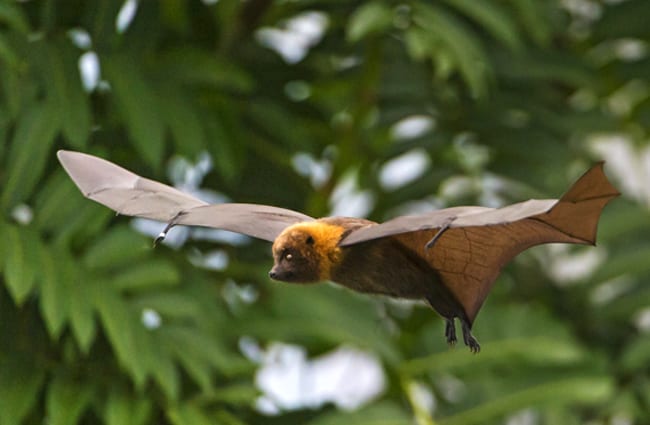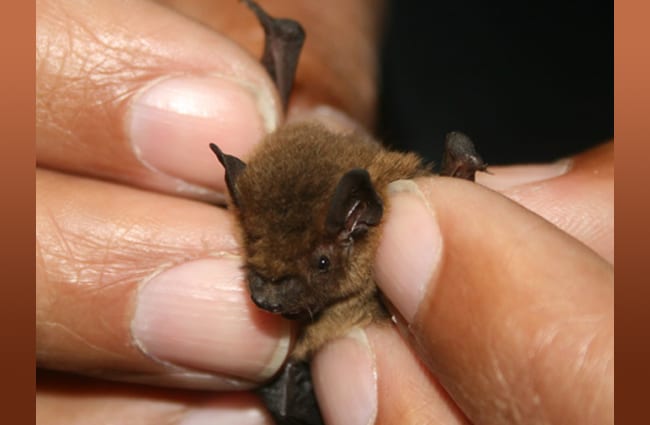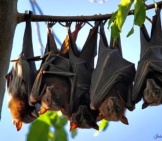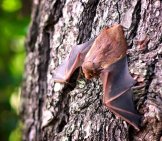Everyone knows what a Bat is, but these little creatures are incredibly misunderstood. They are an incredibly numerous and diverse group of mammals. They are the only mammals that can truly fly, all other “flying” mammals simply glide.
Researchers recognize at least 1,200 different species of animals, all of which they place in the order Chiroptera. The only group of mammals more diverse are rodents. In fact, 20% of all known mammals are Bat species! Read on to learn about the Bat.
Description of the Bat
Though Bats come in many shapes and sizes, they follow the same general body shape. Their bodies are small and covered in fur, and their wings are modified hands/fingers. They elongated have finger bones and a thin membrane of skin known as a “patagium” runs between them to form a wing.
While many species are small, they come in a variety of sizes. The smallest species has just a six-inch wingspan while the wingspan of the largest is over five feet across. Their weight ranges anywhere from less than an ounce to four pounds.
Interesting Facts About the Bat
With so many different species of Bats, the various traits and adaptations are virtually endless. Below, we list several unique species, and the most interesting facts about them!
- Giant Golden-Crowned Flying Fox – This species is remarkable for its astonishing size. Not only are they extraordinarily large, but they are also incredibly rare. At their largest, Golden-Crowned Flying Foxes have a 5.5 foot wingspan. Sadly, habitat destruction and hunting are pushing these creatures quickly towards extinction. The IUCN lists this species as Endangered.
- Bumblebee Bat – On the opposite side of the spectrum is the Bumblebee Bat, also known as the Kitti’s Hog-Nosed Bat. Not only is this species the smallest, but they are possibly the smallest mammal in the world as well! Its closest competition is the Etruscan shrew, which weighs less on average.
- Tube-Lipped Nectar Bat – Even though many species eat insects, these creatures eat a wide variety of meals. Like their name suggests, this species feeds primarily on the nectar of flowers. They have the longest tongue in the world compared to their body size – at 1.5 times their body length!
- Spotted Bat – You don’t have to worry about this species mishearing you, because they have the largest ears of any North American Bat Their long ears grow up to 4 cm long. Though that doesn’t sound like much, you have to remember that the rest of the creature’s body is just 12 cm long!
Habitat of the Bat
This massive group of mammals lives in nearly every type of habitat outside of Arctic regions. You can find these creatures in fields, grasslands, forests, woodlands, rainforests, deserts, and more.
Riparian areas in close proximity to water sources are a particular favorite because they attract yummy insects. Many species also inhabit more urban areas like farms, barns, pastures, parks, suburbs, and even cities.
Distribution of the Bat
You can find these animals nearly worldwide. They live on almost every landmass with the exception of Arctic regions and some islands. Different species have different distributions, and some live across wider ranges than others.
Some of the different areas they inhabit include North, Central, and South America, Africa, Eurasia, Australasia, and more. Though they live throughout all these regions, tropical areas have the greatest diversity of species.
Diet of the Bat
Most Bats eat one specific type of food. Different species specialize their feeding habits to obtain that food. Many feed on insects, some eat fruit and nectar from flowers, and some eat other types of food like blood, frogs, or fish.
Nearly all of them feed while on the wing. They capture prey while flying through the air, snag fruits and berries while flying, or hover to drink nectar.
Bat and Human Interaction
Though these creatures do get a bad reputation, people are slowly changing their view. Sadly, direct attack isn’t the only human interaction Bats need to fear.
Habitat destruction poses a huge problem to many different species, as do pollution and pesticides. Hunting also causes population decline in some areas as well. Different species face different levels of pressure from human activity.
Domestication
Humans have not domesticated Bats in any way.
Does the Bat Make a Good Pet
No, Bats do not make good pets. Even though most do not cause damage to humans, these mammals do carry rabies and can pass it to humans. In most places it is also illegal to own one as a pet.
Bat Care
Different species have different needs in a zoological setting. All Bats live in large, aviary-style enclosures. The aviaries contain various branches, vines, trees, shrubs, and water features. Social species live in large groups known as colonies, while less social species live in smaller groups.
Zoos keep nocturnal species in darker enclosures to increase activity during the daytime for visitors. Their diet also varies based on the species at hand. Zookeepers feed them anything from insects, pelleted insectivore diet, fruits, berries, nectar, and small animals.
Behavior of the Bat
For the most part, Bats are social creatures and prefer living in large groups. A few species live in smaller groups or live alone. Some colonies number in the thousands or more!
Insectivorous Bats usually feed at night, while the fruit-eating species forage during the daytime. All of the various species fly, and most capture or collect food while flying.
Reproduction of the Bat
Like all mammals, Bats give birth to live offspring. Many species reproduce during their hibernation in the wintertime. The specific mating structure varies drastically from species to species. Some reproduce with many partners while others are monogamous.
Females give birth to a single pup, or to a litter of up to four pups. The gestation period varies from species to species. Most carry their babies with them, or leave them behind in their roost, depending on the species and the age of the pup. Most females wean their pups by the time they are one month old.
Beliefs, Superstitions, and Phobias About the Bat
It’s no secret that these creatures get a bad reputation. Across many different cultures, people associate them with darkness, death, witchcraft, vampires, and overall malaise. Though these creatures sometimes spread disease, they are usually quite beneficial to humans.
Insectivorous Bats feed on hundreds or thousands of pesky bugs every night. While everyone loves an animal that eats mosquitoes, farmers get the added benefit of Bats eating insects that feed on crops. Frugivores and those that feed on nectar help pollinate plants and spread their seeds.











![Red Angus Closeup of a beautiful Red Angus cowPhoto by: U.S. Department of Agriculture [pubic domain]https://creativecommons.org/licenses/by/2.0/](https://animals.net/wp-content/uploads/2020/03/Red-Angus-4-238x178.jpg)












![Red Angus Closeup of a beautiful Red Angus cowPhoto by: U.S. Department of Agriculture [pubic domain]https://creativecommons.org/licenses/by/2.0/](https://animals.net/wp-content/uploads/2020/03/Red-Angus-4-100x75.jpg)

